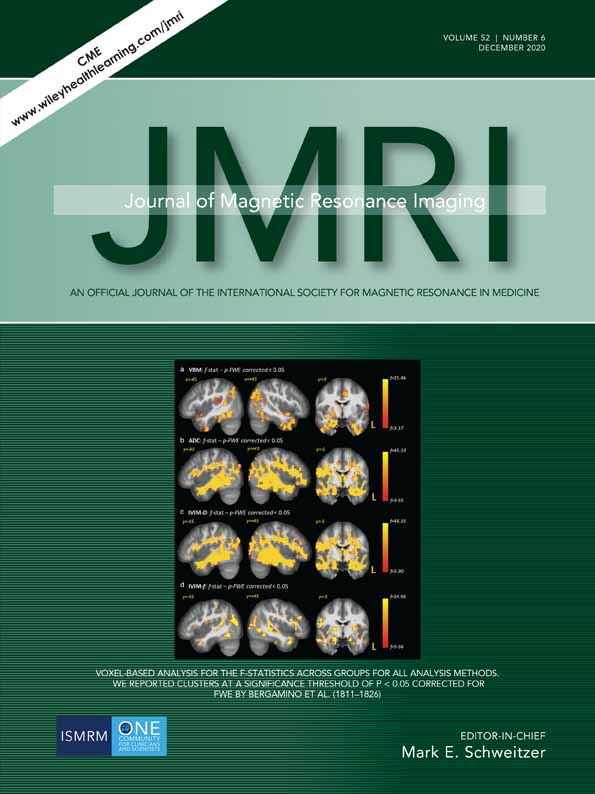Rosette Trajectories Enable Ungated, Motion-Robust, Simultaneous Cardiac and Liver T2* Iron Assessment
Contract grant sponsor: NIH; Contract grant numbers: R01EB009690, NIH R01EB026136, R01DK117354, NHLBI 5T32EB009035; Contract grant sponsor: GE Healthcare
Level of Evidence: 1Technical Efficacy Stage: 1
Abstract
Background
Quantitative T2* MRI is the standard of care for the assessment of iron overload. However, patient motion corrupts T2* estimates.
Purpose
To develop and evaluate a motion-robust, simultaneous cardiac and liver T2* imaging approach using non-Cartesian, rosette sampling and a model-based reconstruction as compared to clinical-standard Cartesian MRI.
Study Type
Prospective.
Phantom/Population
Six ferumoxytol-containing phantoms (26–288 μg/mL). Eight healthy subjects and 18 patients referred for clinically indicated iron overload assessment.
Field Strength/Sequence
1.5T, 2D Cartesian and rosette gradient echo (GRE)
Assessment
GRE T2* values were validated in ferumoxytol phantoms. In healthy subjects, test–retest and spatial coefficient of variation (CoV) analysis was performed during three breathing conditions. Cartesian and rosette T2* were compared using correlation and Bland–Altman analysis. Images were rated by three experienced radiologists on a 5-point scale.
Statistical Tests
Linear regression, analysis of variance (ANOVA), and paired Student's t-testing were used to compare reproducibility and variability metrics in Cartesian and rosette scans. The Wilcoxon rank test was used to assess reader score comparisons and reader reliability was measured using intraclass correlation analysis.
Results
Rosette R2* (1/T2*) was linearly correlated with ferumoxytol concentration (r2 = 1.00) and not significantly different than Cartesian values (P = 0.16). During breath-holding, ungated rosette liver and heart T2* had lower spatial CoV (liver: 18.4 ± 9.3% Cartesian, 8.8% ± 3.4% rosette, P = 0.02, heart: 37.7% ± 14.3% Cartesian, 13.4% ± 1.7% rosette, P = 0.001) and higher-quality scores (liver: 3.3 [3.0–3.6] Cartesian, 4.7 [4.1–4.9] rosette, P = 0.005, heart: 3.0 [2.3–3] Cartesian, 4.5 [3.8–5.0] rosette, P = 0.005) compared to Cartesian values. During free-breathing and failed breath-holding, Cartesian images had very poor to average image quality with significant artifacts, whereas rosette remained very good, with minimal artifacts (P = 0.001).
Data Conclusion
Rosette k-sampling with a model-based reconstruction offers a clinically useful motion-robust T2* mapping approach for iron quantification. J. MAGN. RESON. IMAGING 2020;52:1688–1698.




